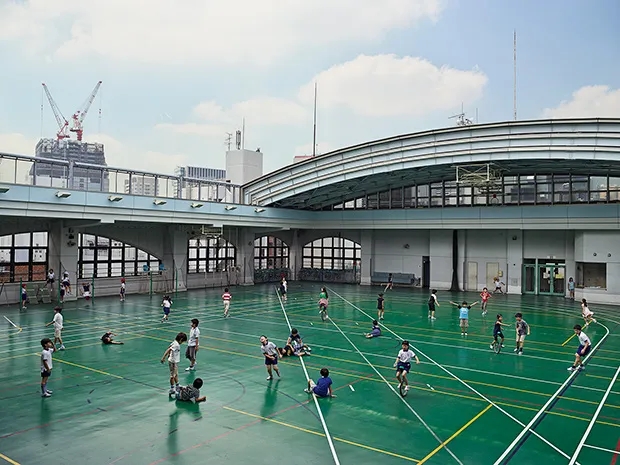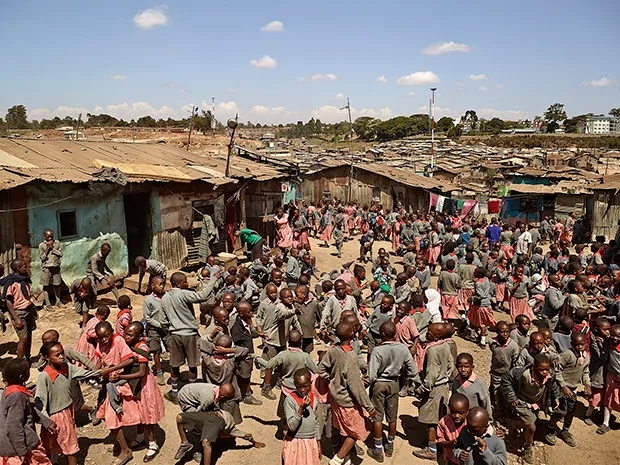
The playground is an important place for James Mollison a photographer based in Venice.
The playground is a place of laughter, games and boisterous activities, but also the scene of taunts and humiliations. The photographer, now a father of two and three year olds, found himself thinking back to his childhood in a British school. His playground was his “home turf”, the place where the bonds and rivalries which define our childhoods were first formed. For Playground Mollison has visited recess zones around the world, from monasteries in Bhutan to slums in Kenya, and examined the ways that children learn by playing.
Mollison was initially met with suspicion by school authorities. He cast a wide net, hoping that some would allow him to enter the playgrounds. Mollison was initially welcomed by a few curious children, but they soon became bored and returned to their games, leaving him to disappear into the background. Mollison did not give the children any instructions, but he would sometimes composite several frames to increase the drama in the scene. This kind of editing, for him, was not a manipulation, but an enhancement of the existing image. It became a way to convey within a single picture emotional truths and stories that unfolded in a certain time period.
Mollison confesses to being apprehensive before visiting the schools. He wanted to tap into a lively and unsterilized atmosphere. He realized, after observing children, that they were still the same kids as they used to be in his time, who bent the rules and played around with each other as they liked. One demographic in every school, regardless of size, location, or finances, was the little boys between 6 and 9 years old, who were always engaging in physical roughhousing. The girls often (but not always) prefer clapping games.
Mollison travelled the world, and despite their unmistakable similarities, Mollison found that the educational environments changed. He says that in China there was no recess, but rather an hour of aerobics and exercise. He finds that in the end, all playgrounds are a place where adult rules do not need to be followed, and a place where children can explore the world. The artist says that playgrounds help children to accept the fact that life is hard. Mollison hopes that when his children are older they will use the photos to navigate the complex feelings in the schoolyard, and express how they feel about the bullying, their best friends, and the budding social life. He suggests that the dynamics of playground are worth discussing.
